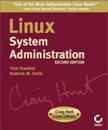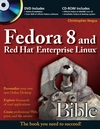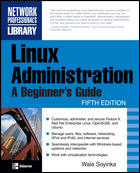作者:Vicki Stanfield, Roderick W. Smith
出版日期:2001
出版社:Sybex
页数:491
ISBN:0−7821−4138−2
文件格式:PDF
Introduction
Linux has made its mark in the commercial world as a server operatingsystem. Figures from IDC in 2000 gave Linux a 24 percent share of thecommercial server market, which is second only to the 38 percent marketshare held by Microsoft. In 2002, IDC projects Linux’s total marketshare will be 41 percent by 2005. Additionally, the acceptance of Linuxfor commercial installation is accelerating with the endorsement ofcompanies like IBM, which optionally ship Linux preinstalled on itshardware. The knowledge that a company such as IBM provides support foran operating system comforts even the most timid IT manager.
Yet remote support, even from IBM, is insufficient for most servers.Servers are simply too important. Critical corporate data is stored onservers. Desktop systems rely on servers for vital services such ase−mail and file sharing. Organizations depend upon their servers, andservers depend upon skilled on−site support from knowledgeable systemadministrators. This book focuses on providing the necessary knowledgefor you to become a skilled Linux system administrator.
If you’re reading this introduction, you are already a Linux systemadministrator or are planning to become one. Either way, you have madea good choice. Knowledge of Linux is an excellent skill for now and forthe future. As the current market share of Linux server systemscontinues to grow, so does the demand for Linux system administrators.
Knowledge of Linux is an important “crossover” skill that can giveyou many more job opportunities. If you come to Linux with a Unixbackground, you’re well on your way to mastering Linux. Linux uses thesame command shells, file structure, and command−line tools as Unixdoes. A good book may be all you need to turn Unix skills into Linuxskills, even if your Unix experience was limited to the Unix system youworked on in college.
A Windows NT/2000 administrator can use newly acquired Linux skillsas a gateway to both Linux and Unix jobs, which often pay more than docomparable jobs administering Windows systems. Many organizations havemixed environments with both Unix and Windows systems. In thoseorganizations an employee with multiple skills is highly valued.







 评论 (0)
评论 (0) 